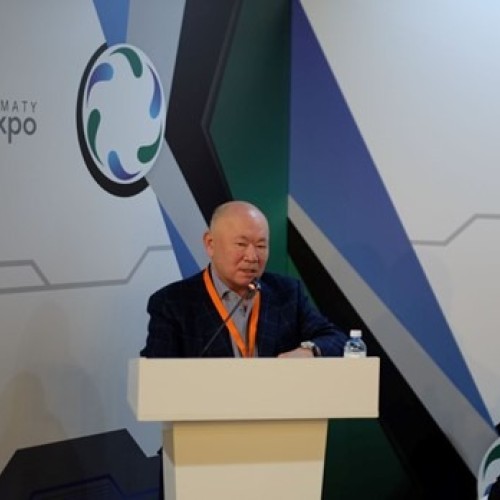June has been an interesting month at home and abroad. It started with the annual European Nuclear Energy Forum in Bratislava, a livelier city today than at the time of my first visit in 1989.
The sun was beating down on day one of the Forum when EU top brass, including Commission Vice President Marcus Sefcovic, were on parade. Last March in Sofia at an energy conference held to mark Bulgaria's presidency of the EU he spoke for forty minutes on EU energy policy without mentioning nuclear once.
In Bratislava Commissioner Sefcovic mangled to concede that it contributes helpfully to the energy mix of some EU member states. I guess we must notch that up as a step in the right direction.
In the past this event, which is the European Commission's main annual nuclear conference, has sometimes been used, totally inappropriately in my view, by visceral critics of nuclear energy to launch vigorous attacks on the industry.
It's hard to imagine the Commission giving similar latitude to opponents of excessive reliance on intermittent or highly priced renewable energy sources. Be that as it may, in the week after the Forum the new higher EU renewable energy target of 32 per cent by 2030 was announced.
The problem with a target for renewables is that it favours one form of low carbon electricity over another and undermines the Commission's mantra that member states are free to choose their own energy mix.
It also suggests that suspicions of an anti-nuclear bias inside the Commission, despite the valiant efforts of many able officials to pursue evidence based energy policies, are well founded.
NNWI has consistently welcomed the growth of renewables, helped by the swift and impressive fall in the price of solar and wind in particular. As both solar and onshore wind approach grid parity, I regret the hostility of some UK legislators to the expansion of onshore wind.
But, as the UK argued back in happier pre-Brexit times when it was a functioning and influential EU member, the key target for the EU to set is not for more renewables but for bigger cuts in greenhouse gas emissions.
Like the effect of Brexit on the balance of pro and anti-nuclear EU member states this is a reminder that the consequences of removing from European debates a country which has long had great expertise in understanding and addressing the threat of climate change are unhelpful.
Similarly doubts surround the UK's medium term relationship with the EU Emissions Trading System. Last year's sensible, though overdue, ETS rule changes have sparked a big rally in the carbon price which is likely to continue and will incentivise investment in all low carbon technologies including nuclear.
Unfortunately it seems likely that the UK will exit the EU ETS in 2020. This is despite the fact that participation in it is not confined to member states and despite the likely future success of a market instrument which was pioneered in the UK. This is another example of the damage inflicted by mindless Brexiters.
From Bratislava I headed for the Bulatom conference at Varna on the Black Sea coast. This was well timed given the current discussions in Bulgaria about reviving the Belene nuclear plant.
It was my first visit to this agreeable resort. A special lunch was held for the conference speakers in a beautiful villa overlooking the water. I was not surprised to learn that this luxurious property had originally been built for the exclusive use of Bulgaria's former communist rulers.
There was wide agreement that Bulgaria's heavy dependence on coal, including three highly polluting lignite plants, must be reduced. This message now seems to have been taken on board in a change of heart from Prime Minister Boyko Borisov who returned to power last year for a third time.
The search is on for the best value solution to this challenge and nuclear will probably be a significant part of the answer. Several possible vendors are interested.
One option under consideration is the Hungary's Paks II model. This involves the state meeting all the capital costs with 80% being covered by a government to government loan from the Russian Federation.
Interest is not payable on this loan until the plant is operational and generating revenue. Adopting this model enables a very competitive Levelised Cost of Electricity to be achieved. For Hungary there's the further advantage that no issues about foreign ownership arise.
Competition may come from China which sees an energy infrastructure investment in Bulgaria as valuable for President Xi Jinping's cherished One Belt One Road initiative. This may lead to an attractive financial package being available.
Finally back in the UK came the long awaited news about Horizon's negotiations over Wylfa. Although the decision must have been taken in the Treasury it was BEIS which announced the reversal of the prevailing UK orthodoxy which has prevented direct state investment in nuclear plants for more than 25 years.
Much more work has to be done before a final agreement is reached but the change, for which NNWI has been calling for years, is very welcome and opens up the possibility of lower electricity prices.
Unfortunately it appears it will be a one off. The favoured option for other new plants in the pipeline is more likely to be the Regulated Asset Base model. Expect the merits of this to be eagerly dissected, not least in Korea whose talks with BEIS about Moorside continue.
Professor Dieter Helm, not a fan of nuclear energy, continues to influence UK government policy and has pronounced the RAB model, to be "both plausible and preferable to the Hinkley model".








